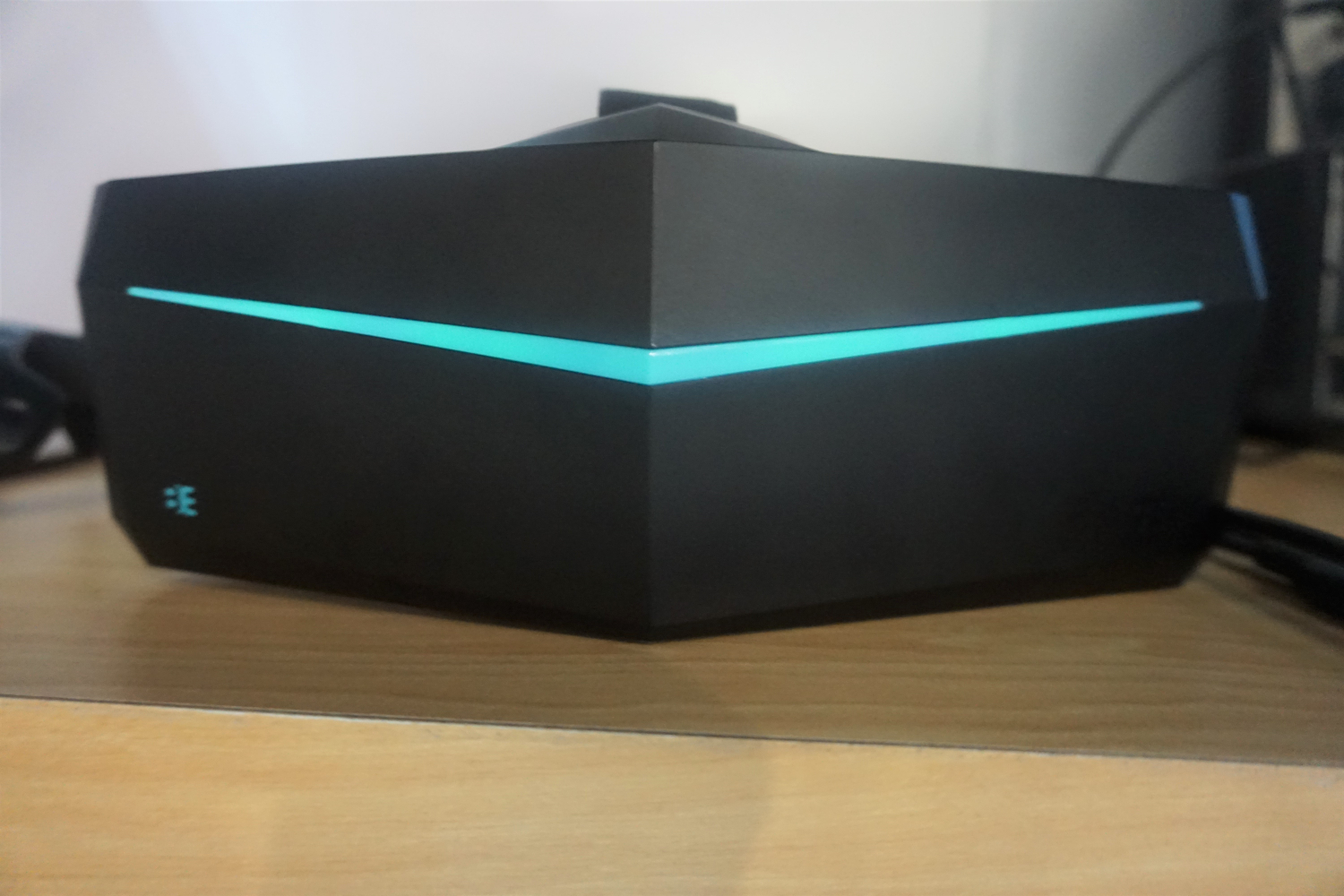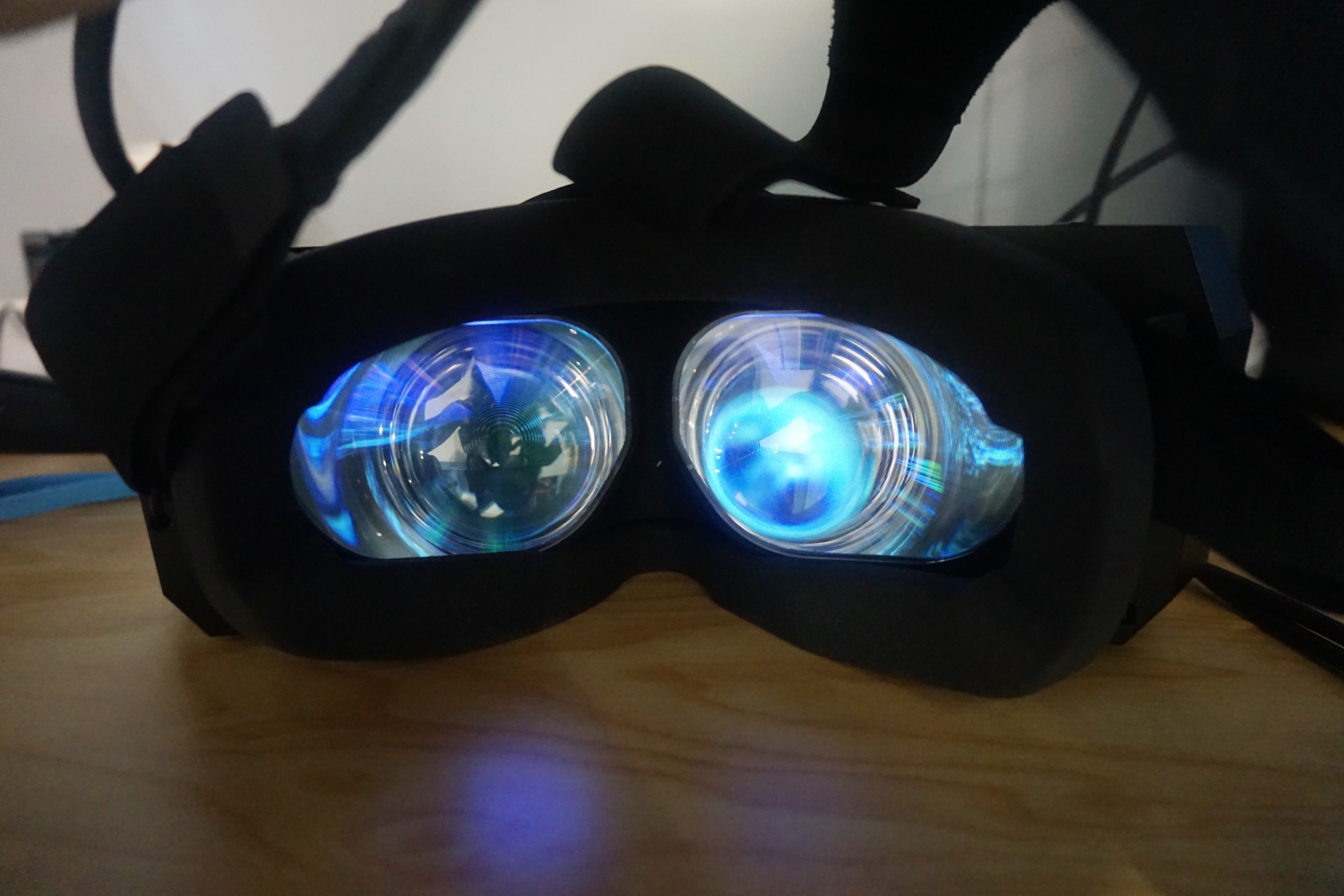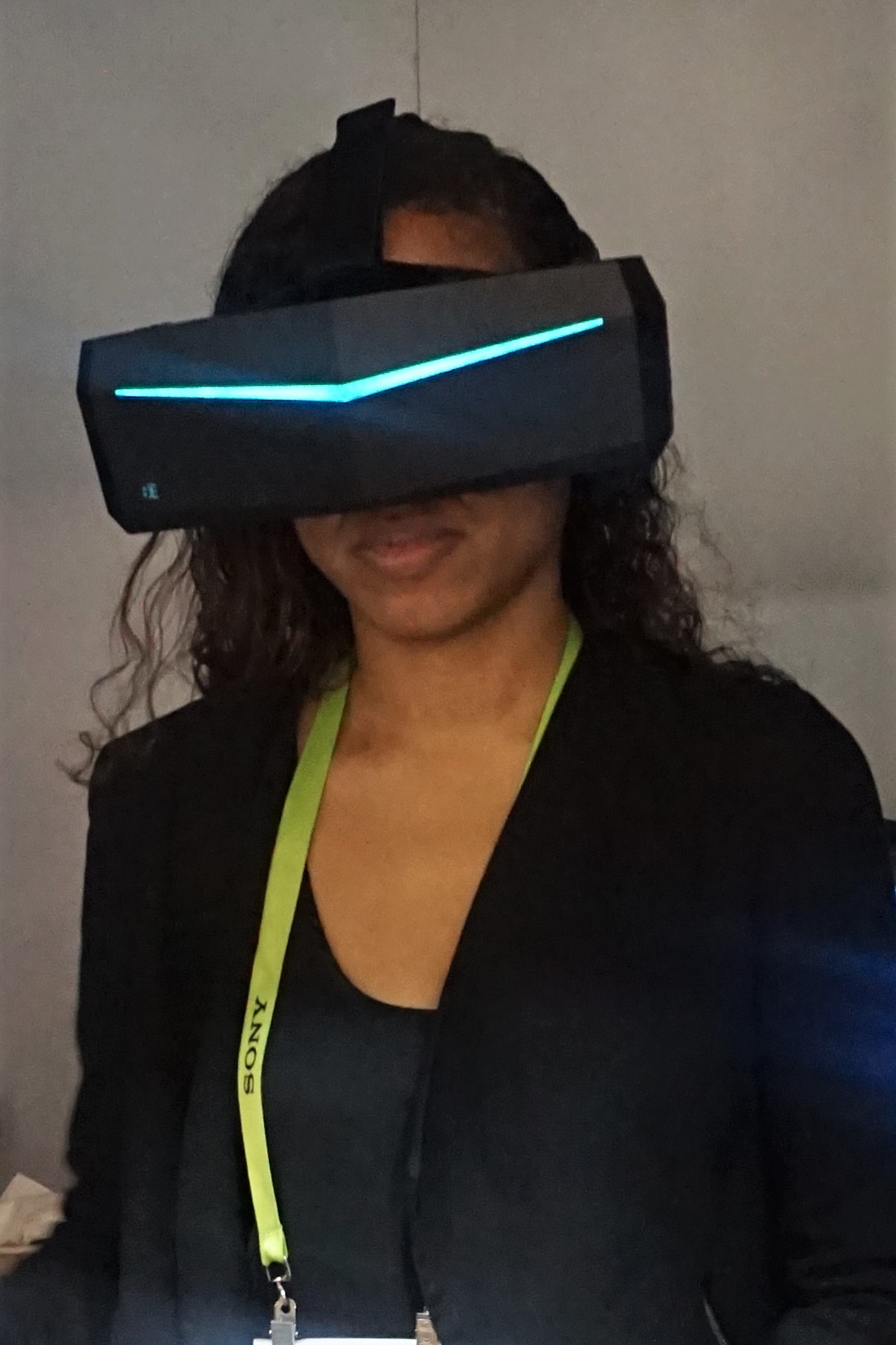Pimax 8K VR Headset Hands-on: Swimming in Color
The Pimax 8K VR headset brings premium image quality to VR with stunning 4K resolution per eye and a 200-degree field of view (FOV) that both surpass any other consumer VR headset. What do these specs means for real-life gaming experiences? Total immersion in stupendous color.
Pixmax 8K VR Headset Specs
| Screen | CLPL (customized low-persistence liquid) |
| Resolution | 3840x2160 per eye |
| FOV | 200 degrees |
| Refresh Rate | 80Hz |
| Audio | 3.5mm audio jackintegrated microphone |
| Price | $899 plus $50 shipping |
Beat Saber on Pimax 8K: A Color Feast
Compared to consumer VR headsets currently on the market, Pimax offers amazing resolution and FOV (field of view). While the Oculus Rift and HTC Vive Pro both beat it in the refresh rate category with 90Hz, the Pimax 8K crushes both headsets in resolution, offering about 6 million more pixels per eye than the Vive Pro and 7 million more pixels per eye than the Rift. And the Pimax’s 200-degree FOV isn’t close to being matched by the Rift and Vive Pro's 110 degrees.
During the CES 2019 tech show in Las Vegas last week, I got the chance to play Beat Saber on the Pimax 8K and was fully captivated by the colors that flooded my FOV. As red and blue blocks came flying toward me, I couldn’t help but be distracted by the fiery, explosive reds and sharp, brilliant blues.
As I advanced in the game and walls started coming toward me, they were defined by bold, crisp lines. The crackling, bright white lines were apparent from a distance, making their incoming all the more ominous and intense. Throughout my playing, I did not notice any blurring or screen door effect, or fine lines between pixels.
The high contrast of the Pimax 8K’s lenses contributed to the powerful colors I saw. The company very roughly estimates the headset’s contrast to be around 5,600:1. This had a delightful impact in Beat Saber, a game that leans heavily on colorful graphics.
Swimming in an 8K VR Ocean
I also went for a swim via theBlu, a VR experience that deeply submerges you into a fish-filled ocean. With a 200-degree FOV there was no distortion in my peripheral vision. Pimax told me that users can see distortion up at to 2 degrees on either side of their peripheral vision; however, in my experience I never felt like waters appeared blurry in my side view. This is great for fighting off any potential VR nausea.
What impressed me most here was the level of detail in the images. Coral and other sea life in front of my eyes were so realistic that I wanted to touch them. But it was the fish swimming above head far away that really stood out. As I stood on the ocean floor, I watched schools of fish pass above me closer to the water's edge. Despite their distance, their fins and bodies were clearly defined and detailed. The fish were not just a blur of green swimming by; they were individual creatures that I could differentiate one by one as the ‘sun’ shined a glare overhead.
Get Tom's Hardware's best news and in-depth reviews, straight to your inbox.
Pimax 8K also has some handy physical features that could further expand its immersive capabilities, like support for daisy chaining modules such as for eye or hand tracking.
Amping up Production
I spoke with Kevin Henderson, who joined Pimax as head of operations in December, during CES. The executive has been tasked with enhancing support and sales in the U.S. He said that a month ago, the company was shipping fewer than 100 headsets daily and that number has increased to up to over 200 a day. The company expects to be done shipping pre-ordered headsets by February 15.
Pimax is also opening headquarters in Orlando, Florida and San Jose, California that will be fully operational by March so Pimax can expand production of its headsets for general availability. Its HMDs are available to order via Pimax’s website, but Pimax is also currently in negotiation with potential distribution partners. Further, Henderson said he wants to share a product roadmap so customers can see where the company is heading.
Pimax Controllers and the Future
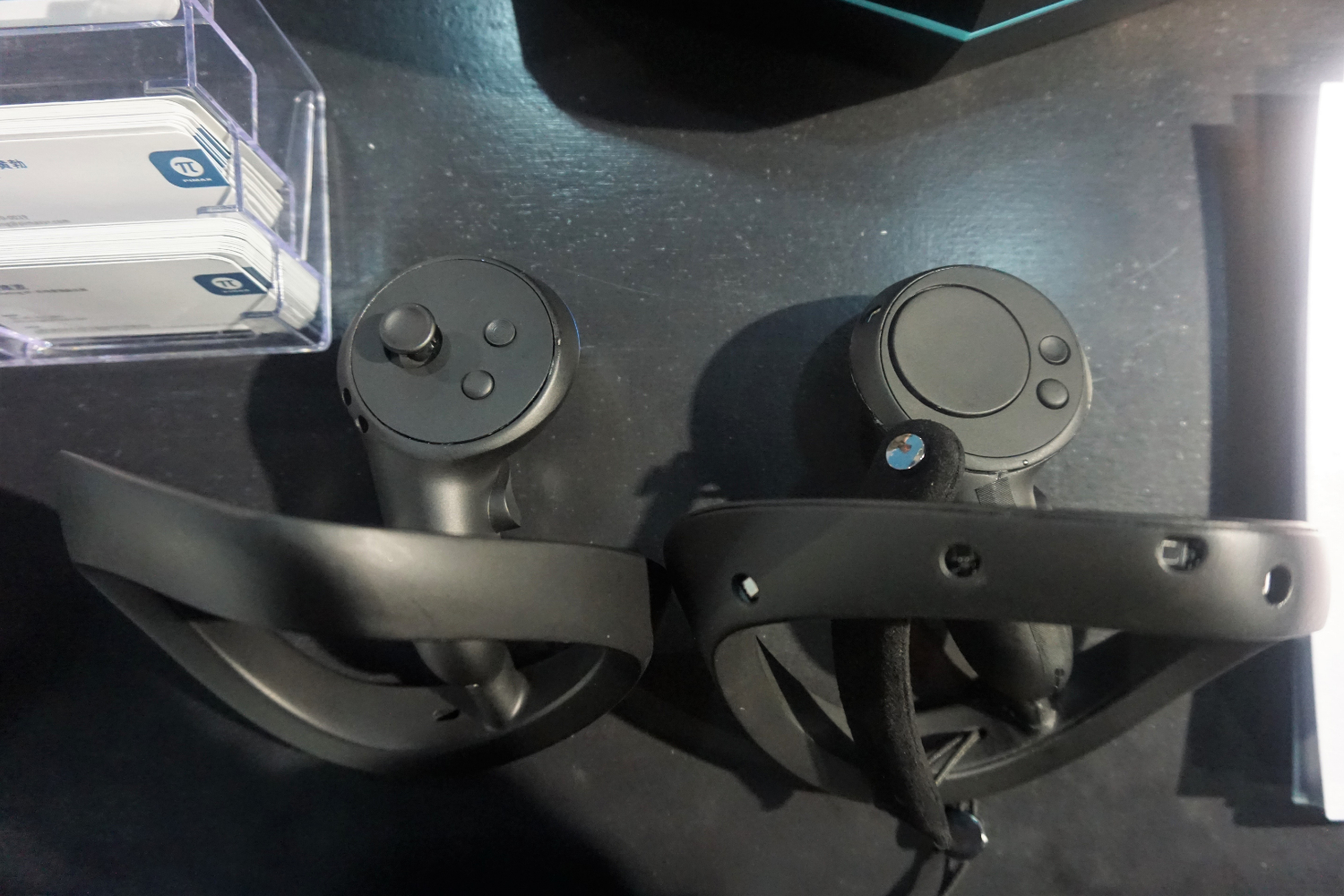
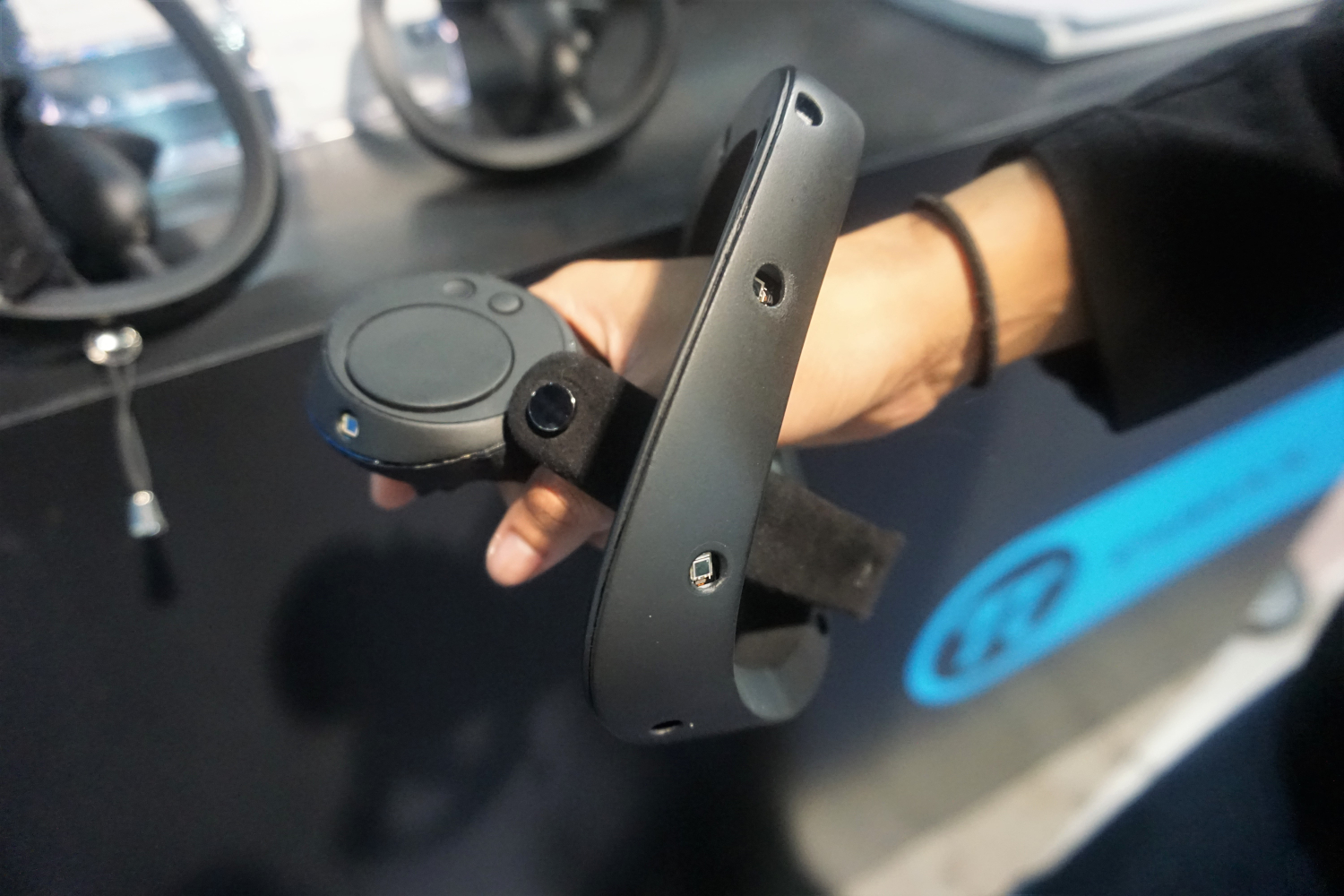
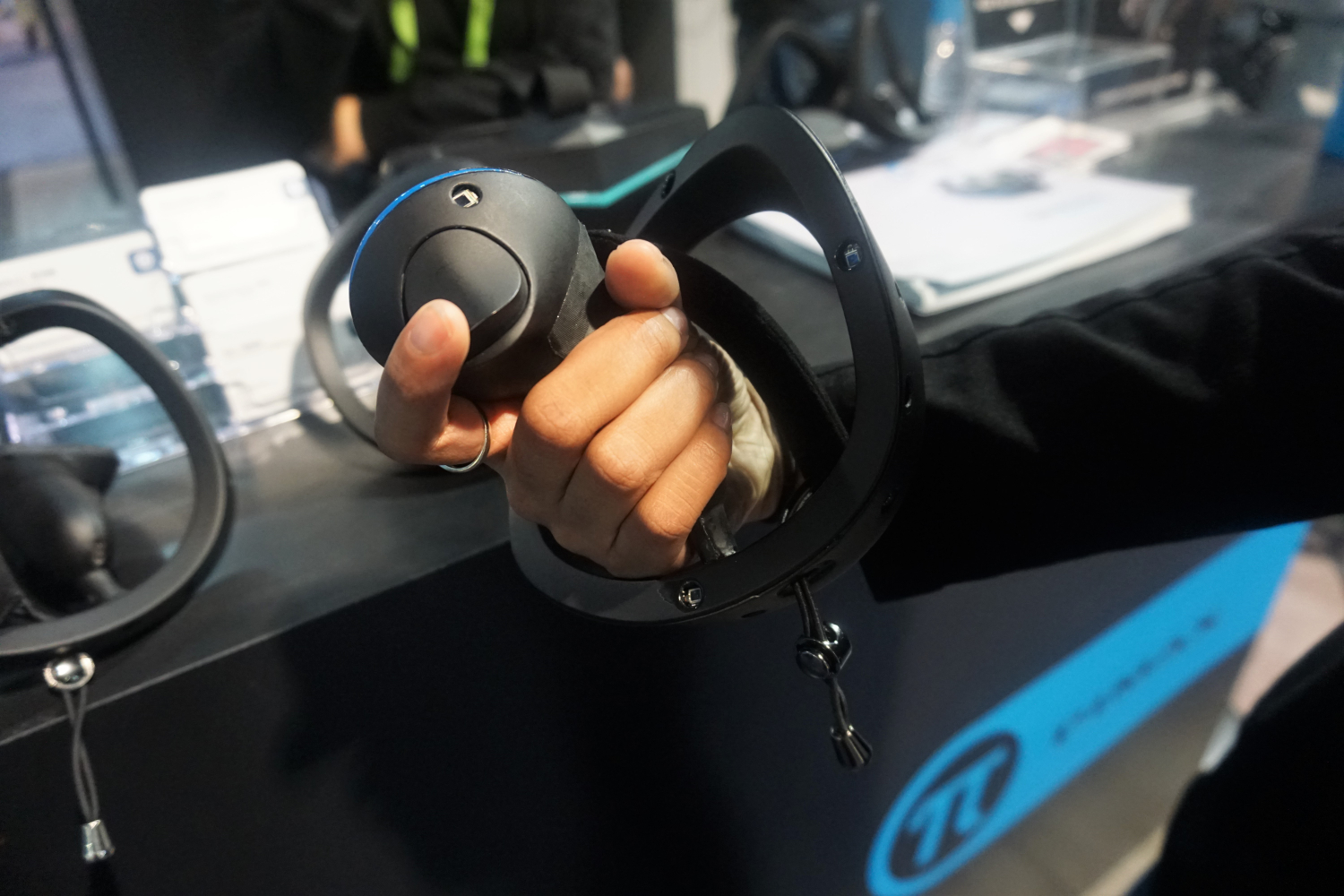
In addition to bringing its headsets to general availability, Pimax is working on growing demand and production over the next two to three months for the Pimax 5K Be, basically the Pimax 5K+ headset but with OLED panels, and developing its Pimax hand controllers.
The Pimax hand controllers are supposed to enable open-handed tasks, thanks to a strap that keeps your hand connected to the controller when your palm is open. The controllers weren’t available for demo at CES, but we were able to grab pics of a prototype.
With HTC Vive about to make VR headsets with integrated eye tracking a thing with its upcoming HTC Vive Pro Eye headset announced during CES, we asked Pimax if this function would be incorporated into a Pimax headset anytime soon. Henderson said that while eye tracking is currently supported via a snap-on device, there aren’t enough practical benefits for the average person currently for Pimax to embed eye tracking into its headsets. It seems the company is waiting for more abundant use cases, like menu control and foveated rendering, which uses integrated eye tracking to diminish the amount of rendering work required by reducing image quality in the user’s peripheral vision.

Scharon Harding has over a decade of experience reporting on technology with a special affinity for gaming peripherals (especially monitors), laptops, and virtual reality. Previously, she covered business technology, including hardware, software, cyber security, cloud, and other IT happenings, at Channelnomics, with bylines at CRN UK.
-
husker To me, a big issue is wireless operation. Once I went wireless with my Vive Pro, going back to a tethered headset seems inconceivable.Reply -
daworstplaya This 8k headset is a gimmic. So many things wrong with it:Reply
1. The 8k image is up-sampled using a chip, the original signal is 5k.
2. The display is only only 80fps, I guessing due to the up-sampling chip.
3. The actual PPI isn't that much better than the HTC Vive Pro.
4. It's an LCD screen, so the black/dark images aren't going to be as good a AMOLED displays in other headsets.
5. Seems to be cheaply made, reports of headsets already failing.
Linus Tech Tips did a great review on the prototypes, which were basically crap. I'll wait for HTC and Oculus to come out with their true 2nd gen headsets, thanks. -
derekullo 3840x2160 x 2 isn't even 8k.Reply
You would need 4 - 4k monitors to get an 8k resolution. -
computerguy72 I finally received Pimax and it blows away my Vive Pro in literally every way. You can see and read things that were not visible at all before. The wide FOV is stunning. To the dude that says Linus did a review - he posted a new one and liked Pimax a lot.Reply -
ingtar33 the huge FOV is the selling point to me. I hate the coke bottle lens feel to the vive and rift.Reply -
rabbit4me1 Forget this junk.im still waiting for 3d TV's with no glasses needed...now that would be awesome. More wasted web pages with a senseless article.Reply -
tfbrodecki First, CLPL is an interesting way to spell LCD.Reply
Second, you know the editor is making stuff up when they write about "OLED lenses".
And they finally lost me at "hand controllers are supposed to have Leap Motion hand tracking" (Leap Motion provides controller-less solutions for hand tracking).
Also, I just noticed this photo of Tom's Hardware's expert holding the left motion controller... with their right hand. -
Rob_54 Reply21680515 said:First, CLPL is an interesting way to spell LCD.
Second, you know the editor is making stuff up when they write about "OLED lenses".
And they finally lost me at "hand controllers are supposed to have Leap Motion hand tracking" (Leap Motion provides controller-less solutions for hand tracking).
Also, I just noticed this photo of Tom's Hardware's expert holding the left motion controller... with their right hand.
Yep, I'd hope for better on Tom's.
-
cryoburner Reply
I'm waiting for a 360 degree spherical OLED 3D room-television. In effect, it will be much like a VR headset, only costing as much a small house. : 321679831 said:im still waiting for 3d TV's with no glasses needed...now that would be awesome.
The problem with glasses-free 3D is that you need to direct a pair of different images to the eyes of each viewer. So, either the viewers need to carefully align themselves with some predetermined positions and not move their head more than a few centimeters to the left or right to retain the 3D effect, or the screen needs to perform some form of eye tracking and adjust lenses on the front of its panel to allow viewers to sit wherever they want and move around. The first option would be more or less impractical as a consumer product, since being forced to sit in precise positions to properly view the 3D image would be far less comfortable than putting on a pair of special glasses. The second option tends to only really work well for a single viewer, and would not really work when multiple viewers are involved. So, you don't hear much about glasses-free 3D TVs for the simple fact that at least with today's technology, it probably wouldn't work very well under normal usage scenarios. The Nintendo 3DS was able to get away with this since it's a handheld device that the user can better position to give them a proper view of the 3D scene, though even there it can feel a bit restricting. They added eye tracking with the "New 3DS" to allow the viewer more freedom in positioning, but still the device is only intended for a single viewer.
And the most important thing you're not considering is that VR offers a completely different and far more immersive experience than simply viewing content on a 3D screen. In VR, one is actually surrounded by the scene, and isn't just watching it through a little stationary window. It's not simply a matter of having a stereoscopic effect, as that's only a small part of what VR involves. The main part of VR is that you can look around wherever you want, and feel like you're within the environment, which is something a television can't really replicate. -
Jeff Fx Reply21677693 said:To me, a big issue is wireless operation. Once I went wireless with my Vive Pro, going back to a tethered headset seems inconceivable.
I found wireless to be a hassle, but that was with the TPCast. Outages during co-op VR sessions made it unacceptable. I wouldn't give up the screen of my Odyssey+ to go back to a Vive and wireless now, but do look forward to going back to wireless in the future..
